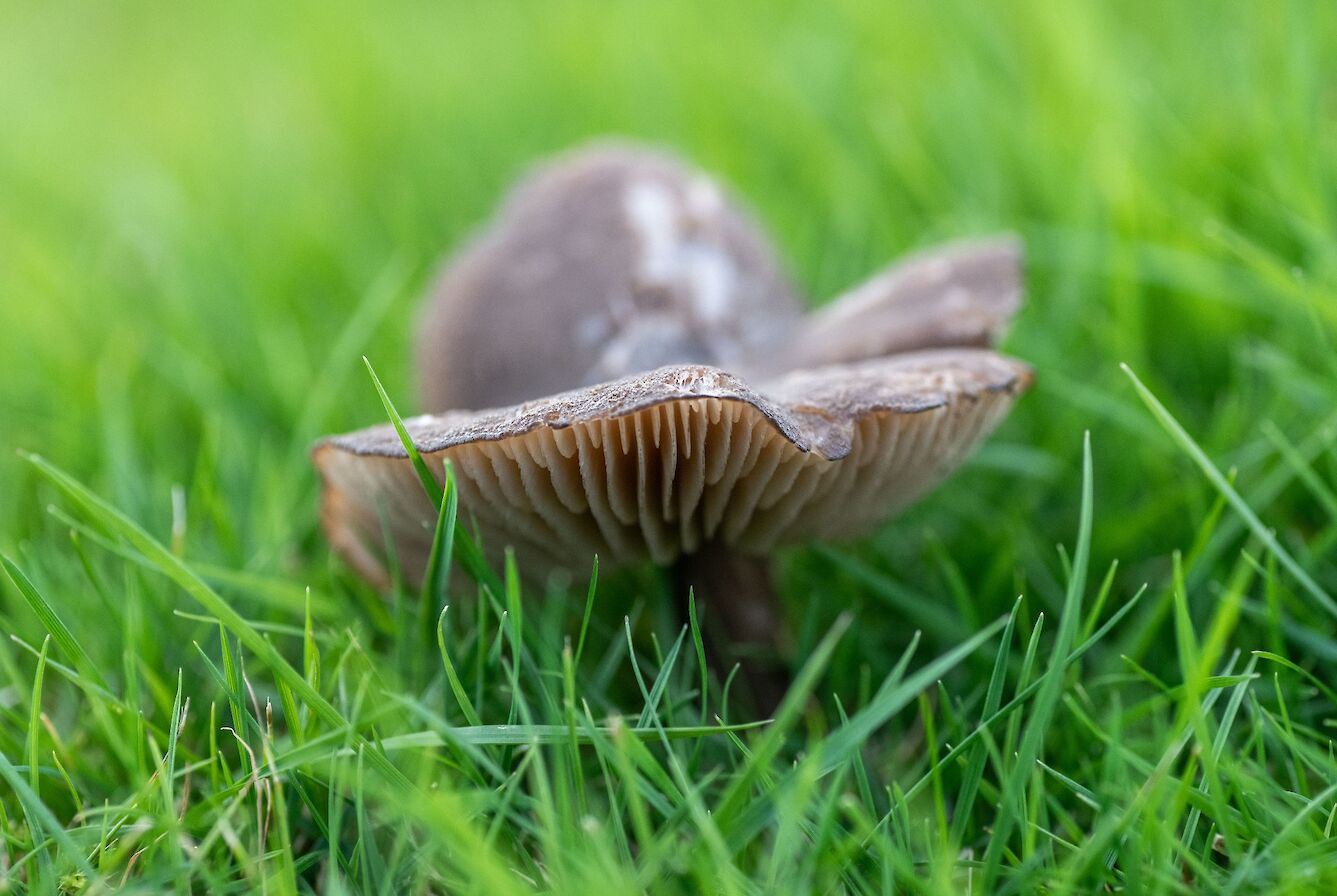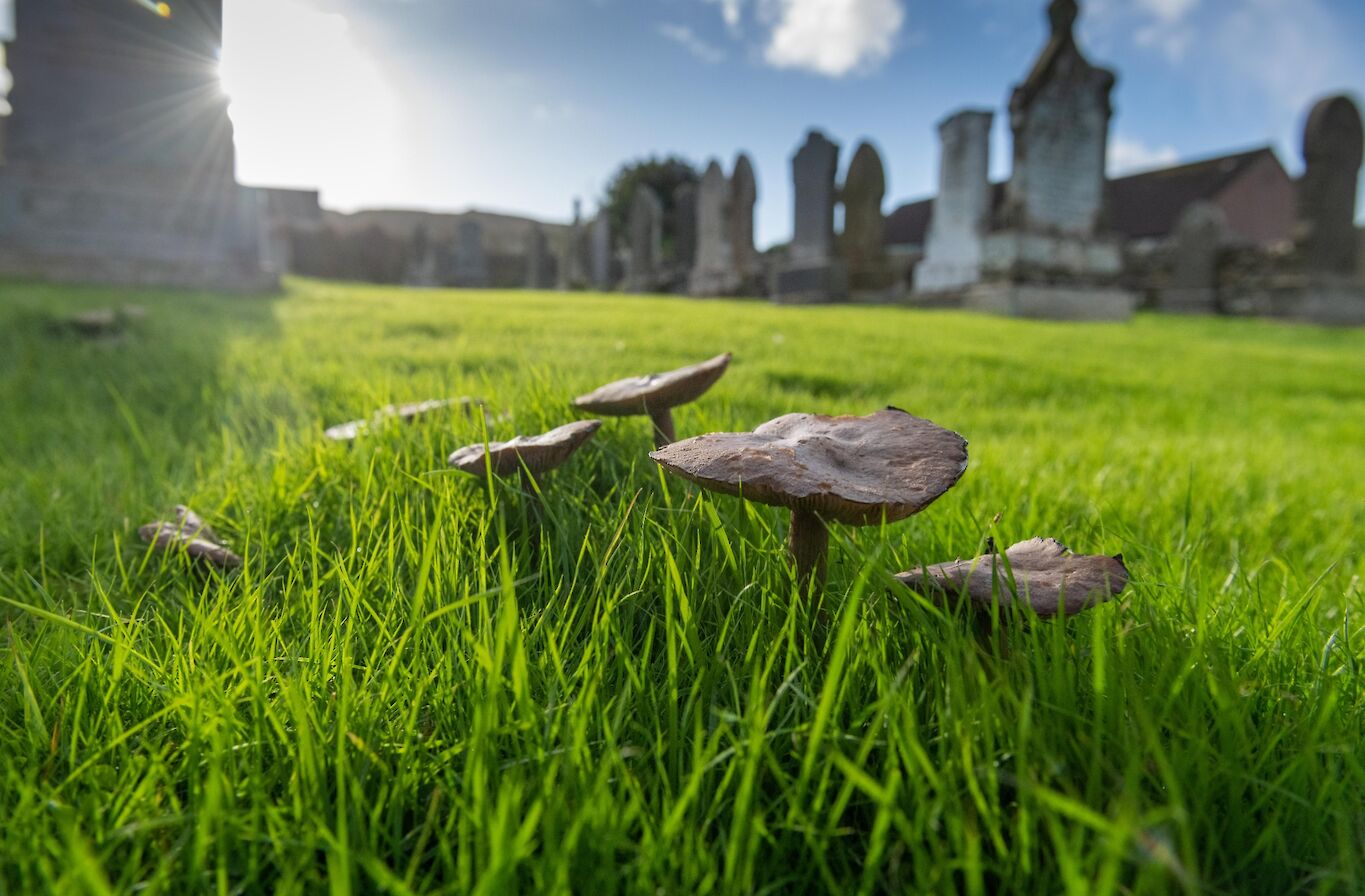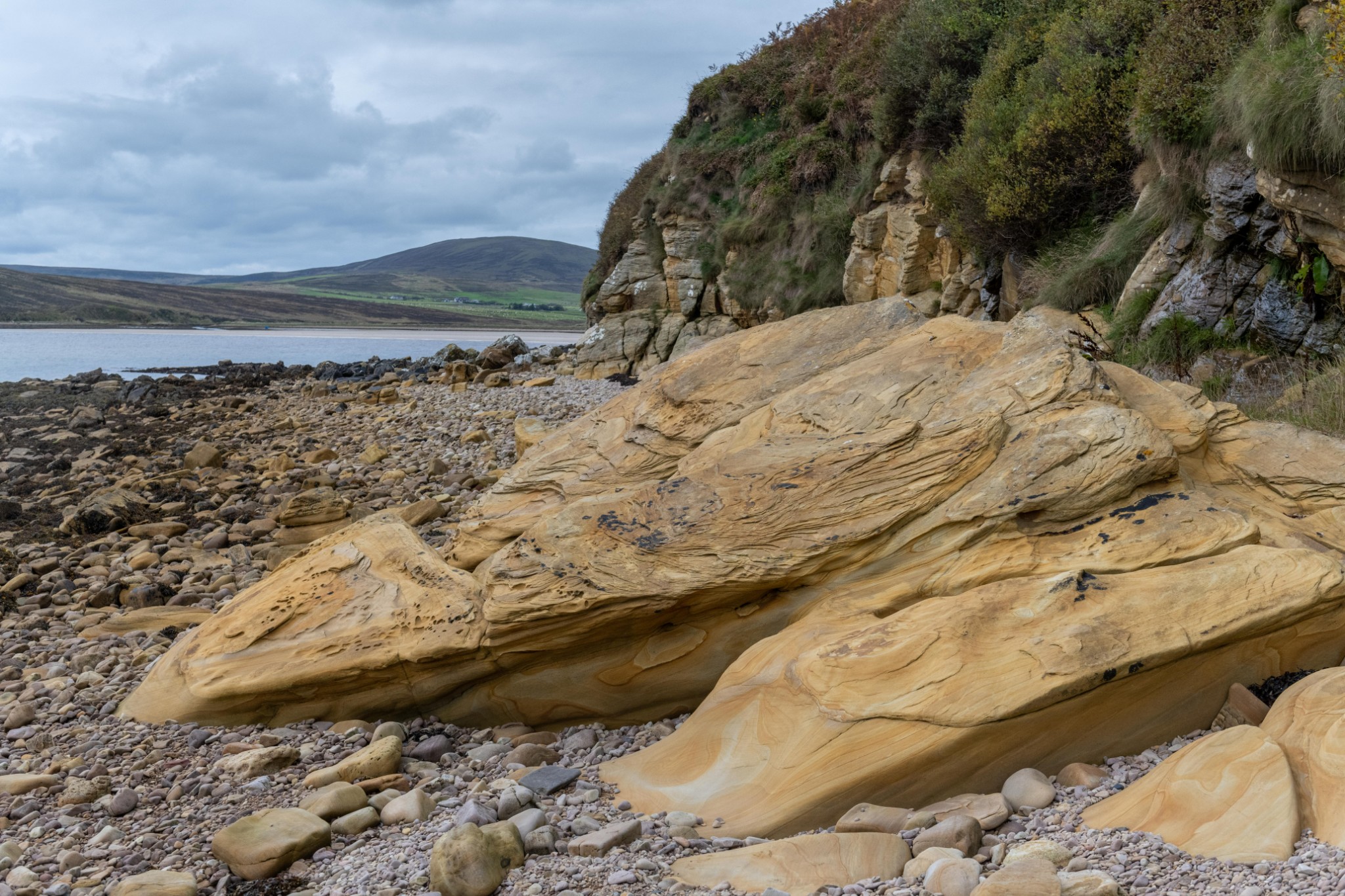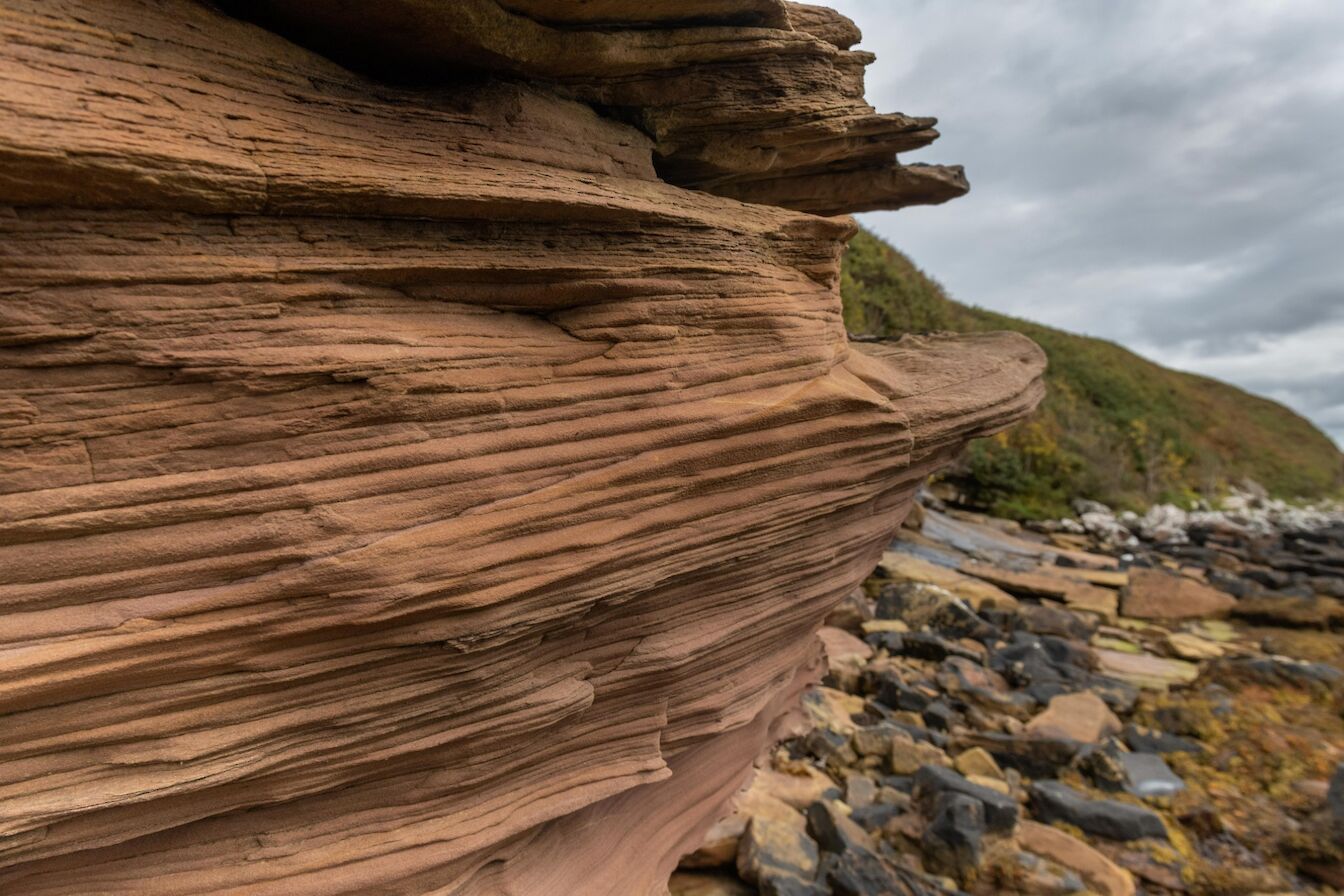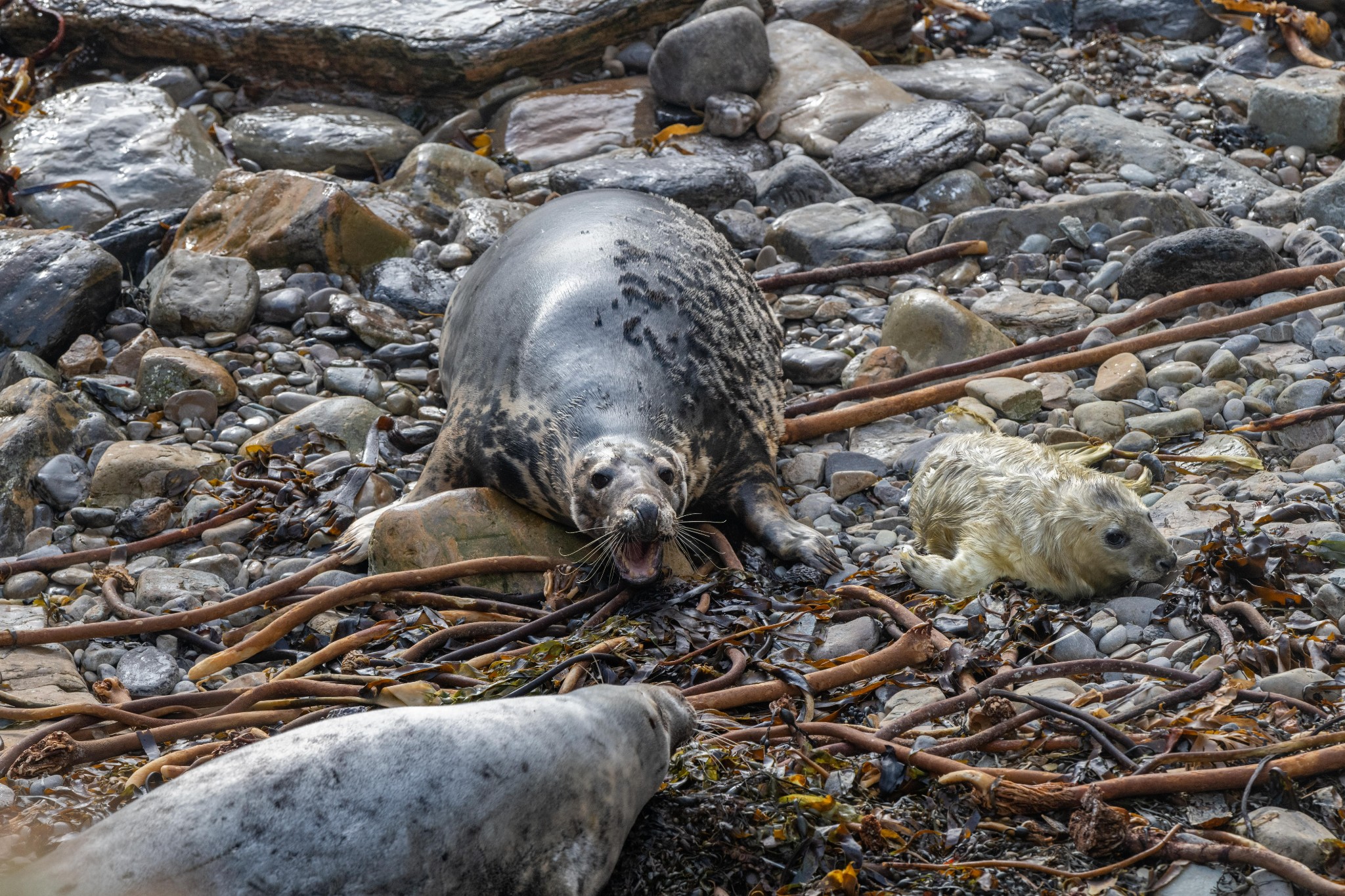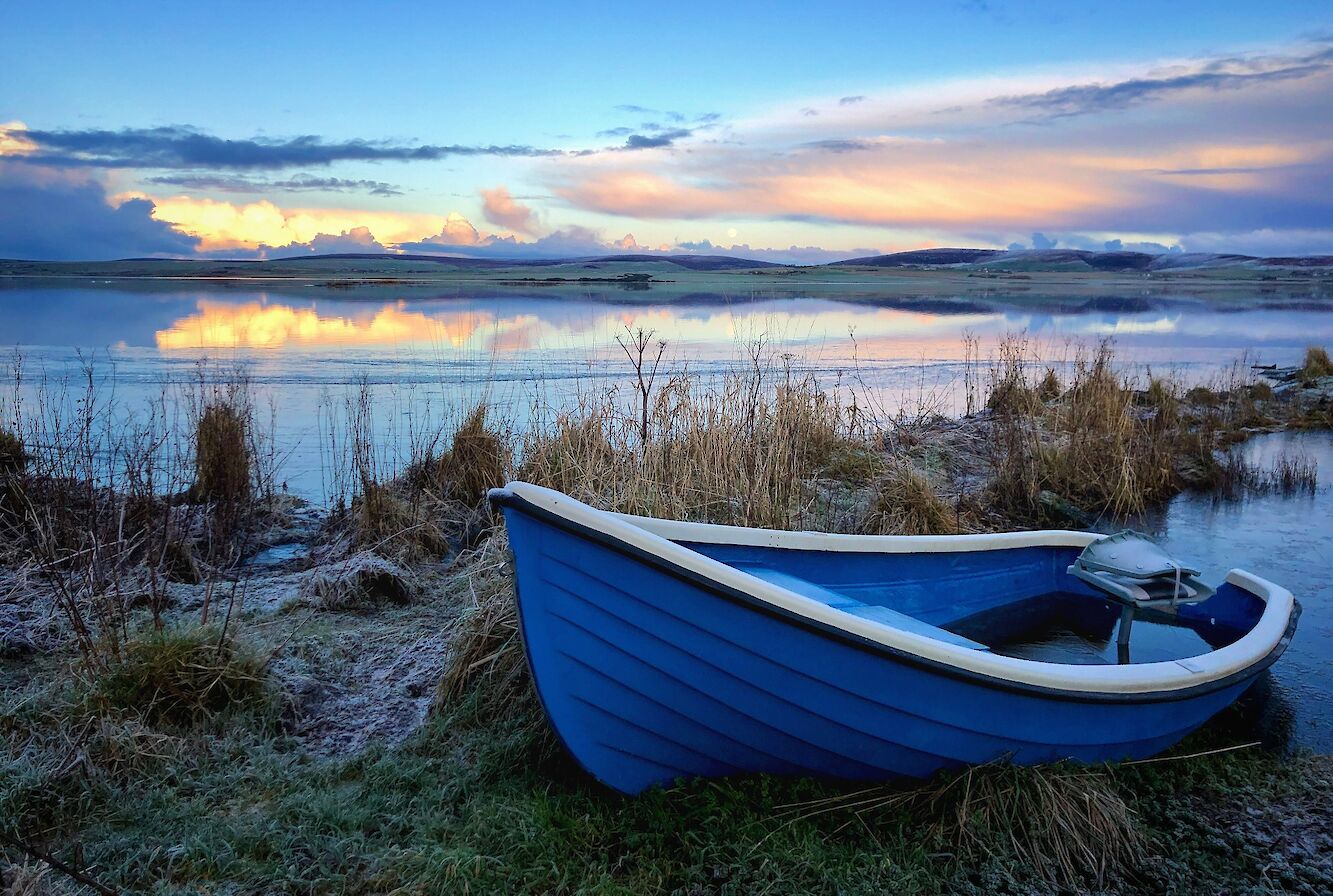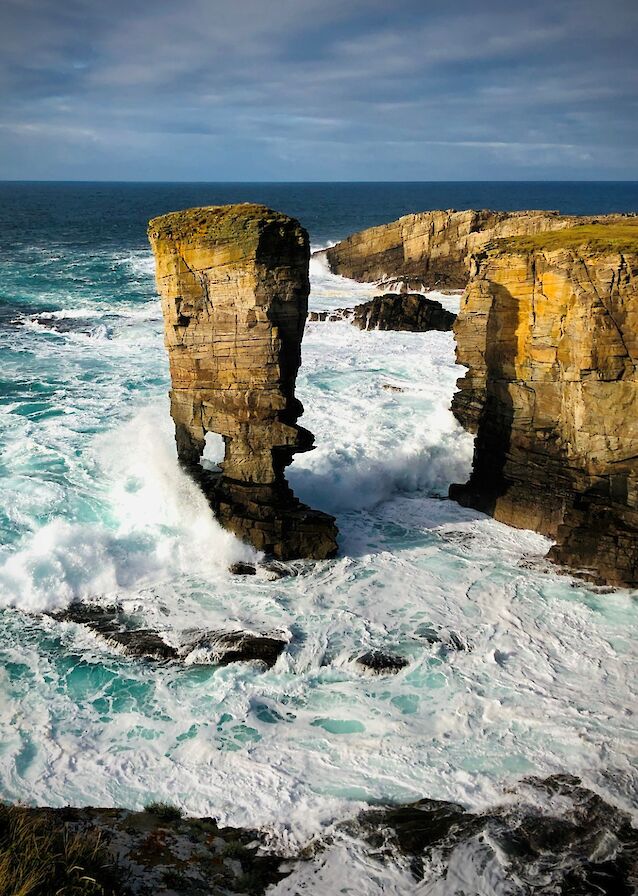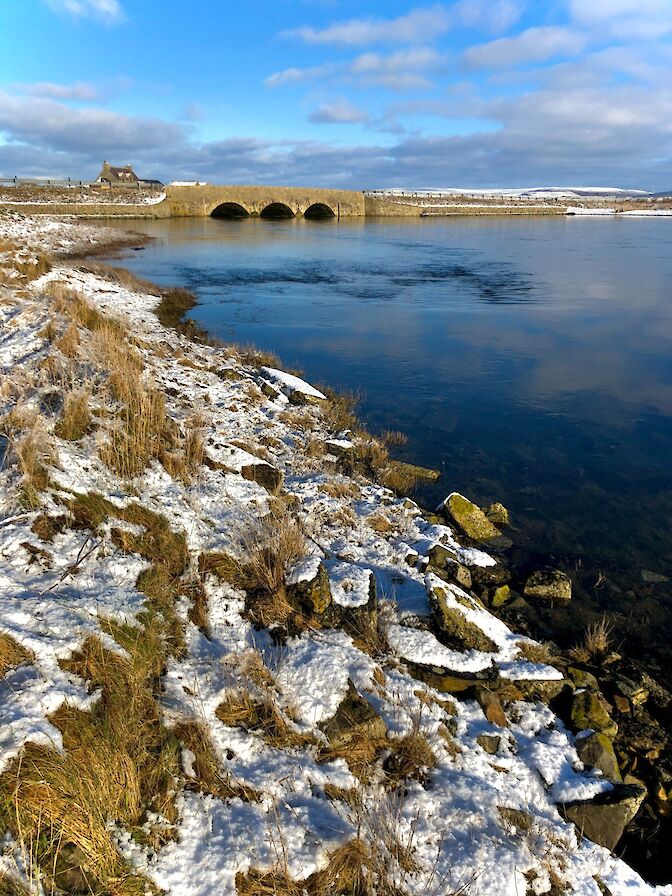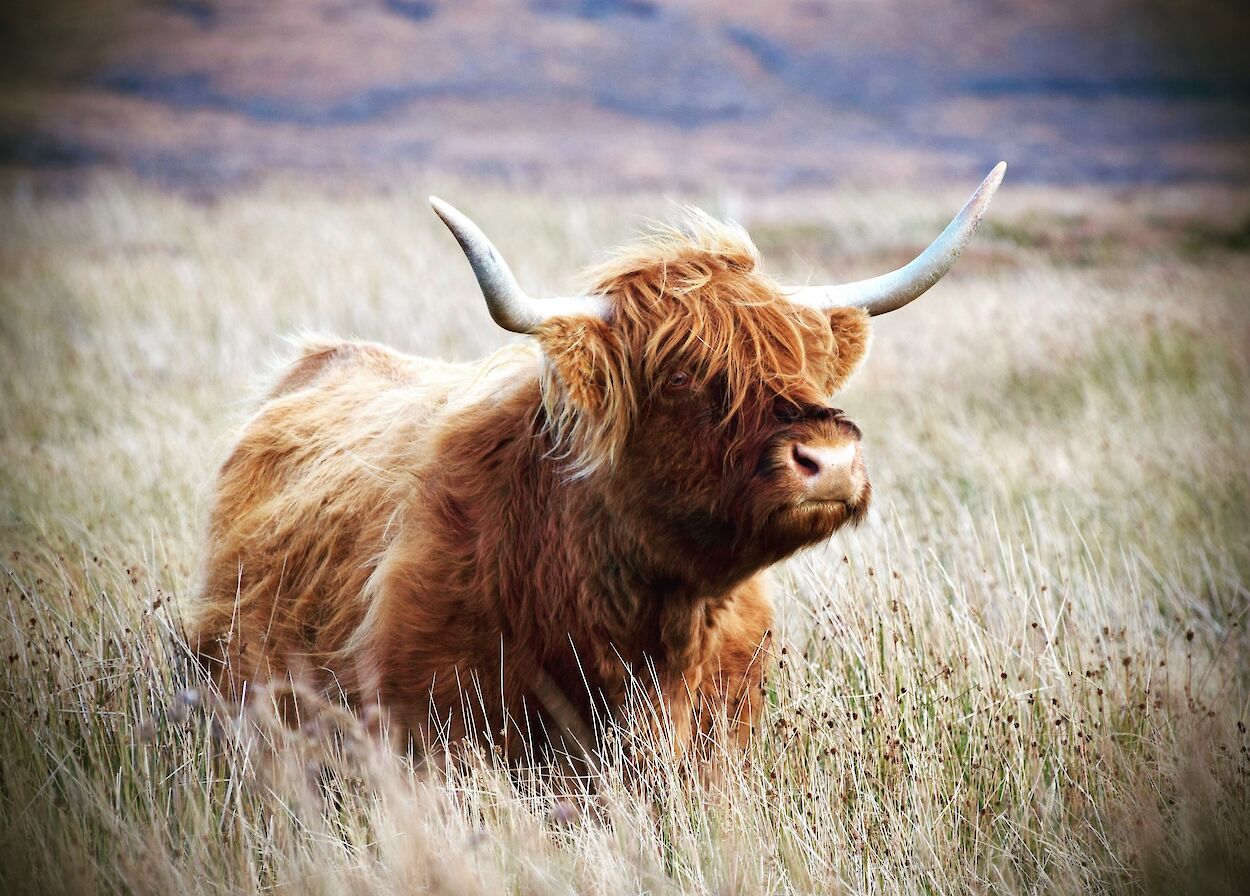Hello and welcome to our latest newsletter from Orkney.
Autumn is in full swing across the islands now as our green fields start to turn a bit bare, and stormy skies blow quickly through on the breeze. You’ll experience all four seasons in a day here – the Orcadian weather certainly knows how to keep us on our toes!
Keep reading for the latest news from Orkney, including our regular wildlife and photography features.
And remember, if you’re planning a trip to Orkney, keep up-to-date with all the latest local information in our COVID-19 section.
Latest news
Orkney to be the focus of major ITV documentary
 As global leaders arrive in Glasgow to take part in crucial climate talks at the COP26 event, the Orkney community’s pioneering efforts to harness our natural resources have been attracting unprecedented attention from the world’s media. Now, the islands’ position at the forefront of renewables research and development will take centre stage in a major ITV documentary called ‘Orkney: Britain’s Green Islands’, being broadcast at 8.30pm on Tuesday 2 November. Filmed earlier this year, the 30-minute programme sees presenters Julia Bradbury and Alex Beresford explore how the islands are making stunning progress towards a greener future.
As global leaders arrive in Glasgow to take part in crucial climate talks at the COP26 event, the Orkney community’s pioneering efforts to harness our natural resources have been attracting unprecedented attention from the world’s media. Now, the islands’ position at the forefront of renewables research and development will take centre stage in a major ITV documentary called ‘Orkney: Britain’s Green Islands’, being broadcast at 8.30pm on Tuesday 2 November. Filmed earlier this year, the 30-minute programme sees presenters Julia Bradbury and Alex Beresford explore how the islands are making stunning progress towards a greener future.
Join the Orkney food and drink trail
 Have you ever wondered where some of Orkney's finest food and drink products are created? Or wanted to meet the talented folk making, baking and brewing all the goodies to be found in the local larder? If the answers are yes then you're in luck. A brand-new trail highlighting the Orkney food and drink businesses offering visitors an insight into how they make their products has been launched. The Taste of Orkney Food and Drink Trail initially features 10 islands companies providing tours, tastings, or other visitor experiences. It’s hoped more local businesses will become part of the trail as it develops over the coming months.
Have you ever wondered where some of Orkney's finest food and drink products are created? Or wanted to meet the talented folk making, baking and brewing all the goodies to be found in the local larder? If the answers are yes then you're in luck. A brand-new trail highlighting the Orkney food and drink businesses offering visitors an insight into how they make their products has been launched. The Taste of Orkney Food and Drink Trail initially features 10 islands companies providing tours, tastings, or other visitor experiences. It’s hoped more local businesses will become part of the trail as it develops over the coming months.
Orkney on the shortlist at Green Energy Awards
 Orkney’s energy expertise has been recognised once again at the Scottish Green Energy Awards. Six local companies and projects have been named on the shortlist for the event organised by Scottish Renewables. Orbital Marine Power head up the Orcadian contingent with no less than three nominations. The European Marine Energy Centre has been shortlisted for two awards, with the Island of Hoy Development Trust completing the local nominations. The winners will be announced in Edinburgh at the beginning of December.
Orkney’s energy expertise has been recognised once again at the Scottish Green Energy Awards. Six local companies and projects have been named on the shortlist for the event organised by Scottish Renewables. Orbital Marine Power head up the Orcadian contingent with no less than three nominations. The European Marine Energy Centre has been shortlisted for two awards, with the Island of Hoy Development Trust completing the local nominations. The winners will be announced in Edinburgh at the beginning of December.
Planning a pre-Christmas break?
 There is still so much to see and do in Orkney before autumn turns to winter. We’ve put together a guide to visiting the islands at this time of year, featuring everything from sea-kayaking and seal pup-spotting, to wild walks and taste-testing the local larder. You can also check out our late availability section on Orkney.com to grab a last-minute accommodation bargain too.
There is still so much to see and do in Orkney before autumn turns to winter. We’ve put together a guide to visiting the islands at this time of year, featuring everything from sea-kayaking and seal pup-spotting, to wild walks and taste-testing the local larder. You can also check out our late availability section on Orkney.com to grab a last-minute accommodation bargain too.
Wild Orkney
Join Orcadian wildlife filmmaker Raymond Besant for another fascinating look at Orkney’s nature and wildlife.
I’ve set myself the challenge of making autumn images in one day that cover fungi, plants, birds and mammals. I’ll confess I find autumn a bit tricky in terms of photography and filming wildlife. Sometimes before you know it, especially if the weather has been poor, we almost slide into winter and the season has passed us by with little of note to show for imagery-wise.
But now, at the very end of October, it feels very autumnal indeed. The jet stream has shifted and so cold air has been drawn down from the north. It’s bright and breezy, there's a chill in the air and white fluffy clouds are zipping past at a rate of knots.
I start my task in the most unlikely of places; an old kirkyard in the West Mainland. Certain species of fungi like short grassland so kirkyards are ideal places for them to thrive. The most obvious species here maybe isn’t the brightest in terms of colour, though. The Field Blewit is a kind of dull beige-brown and stands around 5cm tall on a strong, fibrous stem, with an uneven looking cap. It’s worth getting down on your hands and knees to admire the beautifully delicate looking gills - at this stage in their life they are a warm buff-cream colour, having started life much paler.
You’ll notice too that they grow in groups and, if the space allows it, take a step back and you’ll see it growing in a wider ring. The second fungi I notice is much smaller, only just managing to poke its cap above the lush grass. But what the Golden Waxcap lacks in stature it makes up for in colour. As the name suggest the cap is waxy or slippery looking and is a wonderful vibrant yellowy orange colour. The individuals I find are dome shaped but will flatten out with age. Again, they like unfertilised or unimproved grassland and so this kirkyard is perfect. I say Golden Waxcap - this is actually my best guess! I’m very much a fungi novice and the Plantlife website can be a bigger help than I as wax caps are often difficult to identify. Being a kirkyard, if you visit one for some fungi hunting do of course be respectful of where you walk and photograph.
I head off east, but not by much, to the sheltered beach at Waulkmill in Orphir. The wide sands here are beloved of dog walkers - myself included - but it’s the more secluded part of the shore I’m interested in on my autumn quest. There is gold to be found here...but in this case taking the form of the large rounded (and irregularly toothed) shape of Aspen tree leaves.
The Aspen is my favourite tree, and in this location, there is a small stand of them, literally clinging to life on the edge. Twisted and distorted with their exposure to the elements, it feels odd somehow to find them almost right on the shore. They have a beautiful silver bark and knobbly-looking twigs but it’s the leaves that give them their Latin name of Populus tremula. The leaves flutter in the slightest of breezes and when the tree has its full complement of foliage, they make the most wonderful of ‘hushing’ noises.
Now though, the chlorophyll is breaking down in a vibrant yellow and the last of the leaves contrast beautifully with the patterned lichens of the rocks below. The native woodland of Berriedale in Hoy has a larger stand of much taller Aspen and it’s well worth the ferry hop and moorland trek to see them. An added bonus of the coast here is the wonderfully sculpted and eroded sandstone shapes. I find their honey and amber lines mesmerising and could spend a good hour indulging in photographing their form.
But I need to get on so I start to climb the path back to the main road. After what has been a somewhat quiet autumn for birders there has been a major ‘fall’ of birds from the east, so I’m heading over the Churchill Barriers down to South Ronaldsay to see what I can find.
This ‘fall’ of eastern visitors aren’t rare but they do at least signal the arrival of autumn. I’m only just over the barriers and driving down a track before I see what I’m looking for - a small flock of redwings rises from a field and lands on the fence posts. The redwing is a slim thrush with a distinctive eye stripe and, of course, its russet red underwing patch and spotted chest. Small numbers of redwing breed in Scotland but these birds are migrants from Scandinavia. There are reports too of numerous sightings of brambling, a pretty member of the finch family. The redwings just keep flying further and further away so I admire them from afar, too far for the camera, and move on.
It’s a much more familiar bird that greets me in numbers I haven’t seen before when I arrive at Olav’s Wood towards the east coast of South Ronaldsay - the humble blackbird! I don’t even need to enter the wood to see them as blackbird after blackbird fly past, alighting on posts and barbed wire before quickly flicking their tails and flying off. Again, these are part of an influx of continental birds and seem flighty and intent on moving to the next field.
Lastly, I drive the short distance south to Burwick, the southernmost part of Orkney. Looking across to the Pentland Firth, the tide is running and the horizon far from flat, a mish mash of waves and current hitting the reef just offshore. I walk around the corner towards Scapa Flow (I love these cliffs, they’re so dramatic) where a group of shags, a mix of adults and the lighter coloured juveniles, are resting on the cliffs. But it’s my final autumnal box to tick that I’ve come here for and I can hear them before I see them.
I’ve come to know this site well and know that in the first geo (a narrow cleft with shore in the cliff) there should be grey seal mothers and their newborn pups. I peer over the edge and sure enough, down below, a new-born pup is suckling from its mother. It's likely only a day or two old but will rapidly put on weight as a result of its mother’s super fatty milk. In fact, give it another three weeks and this pup will be weaned and left to fend for itself as winter approaches.
A much larger bull seal is hauled out, seemingly asleep but occasionally ‘hissing’ with mouth wide open at the sight of both new males and females in the water. On this occasion though it’s one of the mothers that is most aggressive, this time towards the other two females on this shore. They all have pups, but with little room to manoeuvre, any movement towards one or the others pups results in much anxiety, the showing of teeth and the occasional lunge. The intention is clear, these mums are super protective and these teeth mean ‘back off’ in no uncertain terms. I often think they cause each other unnecessary hassle and confrontation in doing this as often a seal is just trying to get into the water.
I move further around the coast, looking out for very round looking grey seals that appear to be just bobbing around offshore. These are pregnant mums not quite ready to come ashore, but it won’t be much longer for them. There are maybe 20 seals on a larger stretch of shore further north - it seems very exposed here and this is a pretty benign day in terms of weather. You can see how new pups might struggle on these rocks if the waves were strong. One pup is already weaned, has lost its white pelage and is the shape of a sausage. It sleeps in a corner and must have been the first born on this shore.
In the opposite corner lies a bull seal, his whole head and neck bloodied red. He’s sleeping, obviously having had an encounter with another bull. Sparring bulls like to grip each other around the nape and pull back and forth. It looks brutal, especially as blood seems easily drawn, but the neck is particularly thick on bulls and he shouldn’t feel the after effects for too long. If this is ‘his’ beach and he is the dominant bull here he will have an arduous month ahead, fighting off other bulls so that he can mate with as many females as possible.
I sit and watch for a wee while before calling it a day. The wind bites a little more and I’ve remembered I have a flask of hot chocolate in the car, so it’s time to leave the seals in peace.
Find out more about Raymond’s work via his official website. You can also find him on Facebook, Twitter and Instagram.
Focus on photography
Our final featured photographer of 2021 is Mandy Sykes, who is combining her passion for travel with photography journeys across the islands.
Taking photos has always been important for me, right from being given an Instamatic camera at the age of eight, to what I have now, a Nikon D5300 DSLR crop sensor with a variety of lenses.
But my real love of photography comes from my time as an exchange student in the USA, where I took a photography course at school. Going back to real basics, we made our own pin-hole cameras, developing the pictures in the darkroom. We moved on to SLR 35mm cameras, using a variety of processes and techniques to create different images. More recently, I have also been using my phone camera.
My favourite time of year to get out and about for pictures is winter. Nothing can beat the pure quality of air on a crisp winter’s day with blue skies and the sun low in the sky, giving a warm glow to everything. A visit to Yesnaby the day after westerly winds really showcases the power of nature, with the waves crashing against the cliffs. And the setting sun against the Italian Chapel, or our beautiful St Magnus Cathedral, are scenes really not to be missed.
Moving into spring, I love seeing the emergence of the wildflowers, from snowdrops to daffodils to bluebells in the woods at Happy Valley, or the spread of the thrift along the cliffs at Marwick Head. Spring also sees the arrival of our many seabirds, including the comical puffins – I could watch them all day!
This summer and autumn I have enjoyed visiting some of our outer islands – these really are hidden gems with so much to enjoy and discover, including beautiful beaches, stunning natural landscapes and historical sites. My discovery will continue next year.
And finally...
Thank you for taking the time to read our latest newsletter. If you’re planning to visit the islands this autumn or winter, take a look at our COVID-19 section to make sure you’re up-to-date with all the latest news and advice.
We’re always keen to hear from you too - share your news, views and comments on the newsletter, Orkney.com and your Orkney experiences with us on Facebook, Twitter or E-mail.
In the meantime, it's cheerio from Orkney for now.

